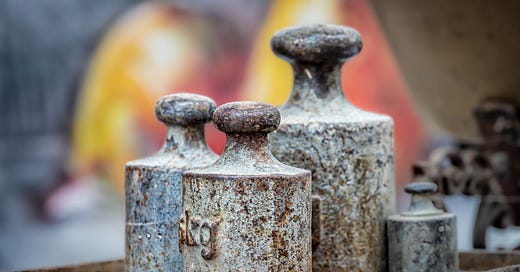Whether you’re trying to plan out a new story or fix one you’ve already written, it often helps to revisit the fundamentals. There’s considerable disagreement when it comes to exactly how many distinct kinds of stuff make up a story, but my favorite model is the simplest: a story, like an atom, is made up of three things: plot, or protons; setting, or neutrons; and character, or electrons. In this article, I’m going to draw out what each of these particles contributes—you’ll want some of each, but probably not in equal measure.
Plot, or protons
The number of protons in an atom determines what element (e.g., hydrogen, helium, or lithium) the whole atom is. In partnership with neutrons, protons provide the mass of the atom, and their charge is what keeps the atom’s electrons attached. In the same way, the plot determines what kind of story you’re telling (e.g., coming-of-age, romance, or mystery). Combined with the setting, plot provides the genre of the story, and it’s what keeps the characters doing things-worth-reading-about.
You can write a story that’s light on plot, if you want to—Terry Pratchett did, in The Colour of Magic—but most stories you’ll read or want to write will probably depend significantly on the plot to keep and repay the reader’s interest. For contrast, another book that follows a wizard through his adventures among fantastical islands, but is much heavier on plot, is the excellent A Wizard of Earthsea, by Ursula K. LeGuin.
Setting, or neutrons
The number of neutrons in an atom determines what isotope, or variety of the element, the atom is, and contributes mass to the atom. The setting, likewise, has a significant impact on what kind of story you’re telling, primarily through the genre: a heist plot set in the old west is going to look quite different, and invoke quite different expectations, from a heist plot set in a far-future ecumenopolis.
Stories that take place in “the real world” are often going to be light on setting, like Robert McClosky’s Homer Price. You can certainly make the setting a selling point of the story even if it’s relatively mundane, but you’re more likely to see that kind of focus on the place where the characters are doing the plot when you’re writing a secondary world for your readers to visit. A good example of that latter is The Phantom Tollbooth by Norton Juster, which also follows a boy doing what he can to stave off boredom, but is so setting-focused that it’s almost a travelogue.
Character, or electrons
The number of electrons in an atom determines the charge of the whole atom, how that atom will interact with other atoms. So, too, the characters in a story are responsible for the story’s tone, as well being arguably the foremost reason for readers to pick up future, related stories. (You might go somewhere exciting or beautiful for special occasions, but you probably want to talk to your friends on a weekly, if not a daily basis.)
It’s possible, if rare, to write a compelling story without heavily investing in characterization. Isaac Asimov famously did it in his Foundation series. At the opposite end of the spectrum, still following the fate of a galaxy-spanning empire, you have Timothy Zahn’s Thrawn series, where the characters are very much running the show. Like all the books mentioned earlier, these are both highly successful examples of storytelling; anything can be done well, but it’s easier if you know what you’re aiming to do.
Further reading
In this article, I presented stories as being made of three distinct kinds of stuff. The “MICE Quotient”, invented by Orson Scott Card and popularized by Mary Robinette Kowal, has four particles, divided somewhat differently—if my model doesn’t suit you, perhaps that one will. Karen Woodward explains it well.
If you’re looking to write a plot-heavy story but don’t know where to start:
If you want some inspiration for a characters who can carry your next work:




